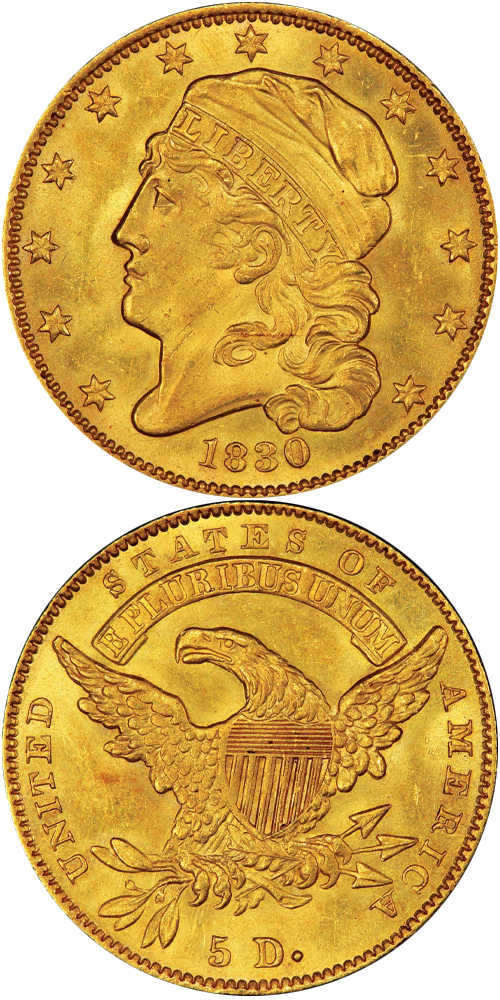1830 Capped Head Left Half Eagle
Small 5D
The discovery of rich gold deposits in North Carolina and Georgia led to this country's first gold rush. As prospectors settled in the gold fields, they found that many of these lands were occupied by the Cherokee Nation. In 1830, Congress passed the Indian Removal Act to look into the possible forcible removal of the Cherokee which later in the decade, under the Van Buren administration, led to the "Trail of Tears." Newly mined gold making its way north to Philadelphia coincided with the introduction of a new coining press. The half eagles struck in 1830 employed this new press and show a markedly smaller diameter with a distinct upset rim. Production was stepped up in 1830 with 126,351 coins struck from two die pairs in five deliveries on March 31, May 20, June 30, September 30, and December 31. Nearly all were exported and melted.
There are two varieties, one with a small D in the denomination and the other with a large D. Neither is common, though the BD-2 with the small D is slightly more available, with maybe as many as 40 extant specimens.
The example to the left was sold by Stack's Bowers Galleries in the D. Brent Pogue Part IV Auction, where it realized $152,750.






